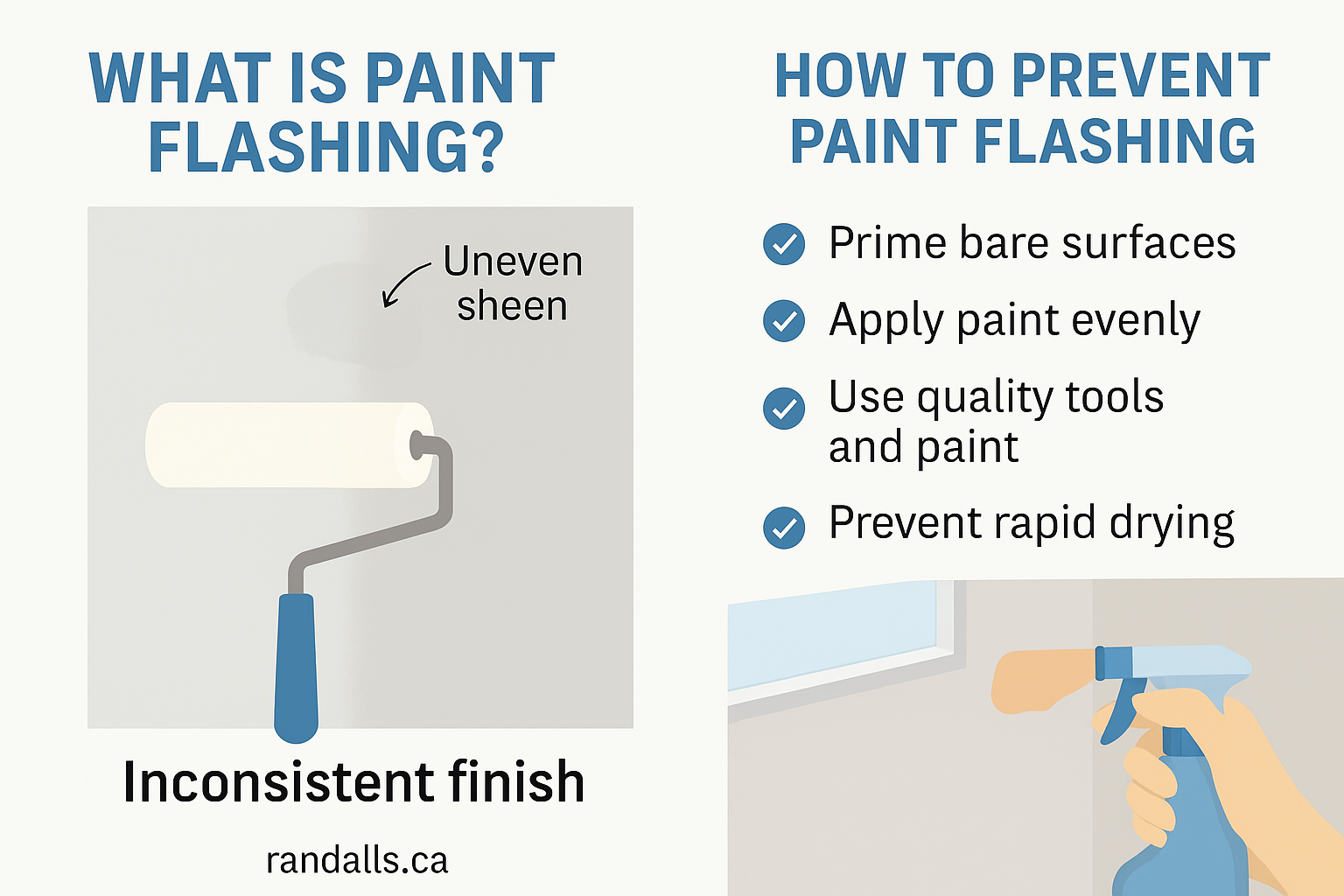Have you ever noticed shiny or uneven patches on a freshly painted wall that remain visible even after drying? That’s paint flashing — a common but preventable problem that can affect the final look of your paint job. Understanding what causes flashing and how to avoid it is key to achieving a smooth, uniform finish.
1. What Is Paint Flashing?
Paint flashing refers to areas of uneven sheen or gloss that appear on painted surfaces, typically caused by differences in surface texture or application. These shiny spots often become more visible under certain lighting, especially near windows or bright overhead lights.
In simple terms, flashing happens when some areas absorb more paint than others, resulting in inconsistent light reflection.
2. What Causes Paint Flashing?
Several factors can lead to flashing, including:
-
Improper surface preparation – Unevenly sanded or unprimed areas absorb paint differently.
-
Skipping primer – Porous surfaces like drywall or patched sections soak up more paint, causing sheen variation.
-
Uneven paint application – Inconsistent roller pressure or thin coverage can leave streaky areas.
-
Using low-quality tools – Poor-quality brushes or rollers can apply paint unevenly.
- Different paint sheens – Applying new paint with a slightly different gloss level over old paint can highlight variations.
3. How Can I Prevent Paint Flashing?
Here are some expert-backed ways to prevent flashing and ensure a flawless finish:
a. Always Prime First
Primer creates a consistent base that helps paint adhere evenly. This is especially important on new drywall, patched spots, or previously glossy surfaces.
Learn more about proper primer use in our article The Role of Primer: When and Why You Should Use It
b. Use Quality Paint and Tools
High-quality paints contain better binders and pigments, providing more even coverage. Pair them with premium rollers and brushes, available at Randall’s Collections
c. Apply Paint Evenly
Maintain steady pressure on your roller and use overlapping “W” or “M” strokes to distribute paint consistently. Avoid overworking partially dried sections.
d. Paint Under Consistent Lighting
Flashing often appears under strong directional light. Use proper ambient lighting while painting to identify uneven areas early.
e. Allow Proper Drying Time
Rushing to apply a second coat before the first is fully dry can create uneven sheen. Always follow the manufacturer’s recommended drying times.
4. Can Flashing Be Fixed After It Happens?
Yes — but it requires a little extra effort.
If flashing has already appeared, try the following:
-
Lightly sand the affected area to smooth out surface inconsistencies.
-
Apply primer to the repaired section to create an even base.
- Repaint the area using even strokes and proper blending techniques.
For larger or more complex cases, consider consulting Randall’s painting services
5. Is Primer Always Necessary to Prevent Flashing?
In most cases, yes. Primer is the foundation of a professional finish — especially when:
- Painting new drywall or bare wood
- Covering repairs or patches
- Changing from dark to light colors
- Painting over glossy finishes
You can order the ideal primer and related supplies directly through our Painter Order Form
6. Does the Type of Paint Sheen Affect Flashing?
Absolutely.
Higher-sheen paints like satin, semi-gloss, or gloss tend to reveal imperfections more easily. For high-traffic areas, consider eggshell or matte finishes, which hide minor surface variations better.
You can browse Randall’s wide range of paint finishes and sheens in our collectionsfor professional assistance.
7. When Should I Call a Professional?
If you’ve already applied multiple coats and still notice uneven gloss or streaks, it may be time to get expert help. Randall’s professionals can assess your walls, recommend the right products, and deliver a flawless finish.
Reach out today via our Contact Uspage for guidance or service booking.
Paint flashing is easy to prevent when you start with the right prep work and quality materials. By priming properly, maintaining consistent technique, and using trusted products, you’ll achieve the smooth, even finish your home deserves.
For all your painting tools, primers, and professional-grade paints, visit your local Randall’s store or explore our online collections
